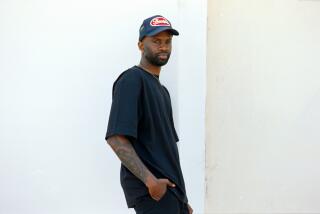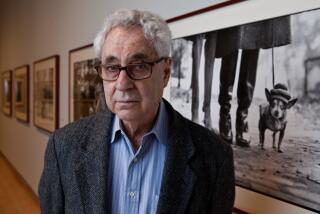Photographer Willard Van Dyke Dies : Worked With Adams, Weston in Founding Influential f.64 Group
- Share via
Willard Van Dyke, with Ansel Adams and Edward Weston a founder of the widely influential f.64 Group of still photographers and more recently a director of the film department of the Museum of Modern Art in New York, died Jan. 23 after suffering a heart attack in Jackson, Tenn.
Van Dyke, 79, died while driving from Santa Fe, N.M., to Harvard University in Cambridge, Mass., where he was to assume the position of artist in residence.
He and his wife, Barbara, had stopped for the night when he became ill. He was taken to a nearby hospital, where he died.
In the 1930s, Van Dyke, Adams and Weston created a group they called f.64, after the lens opening providing the sharpest focus. The three developed a revolutionary photographic technique that depended on both sharp and deep focus, rather than on manipulation of a print to make it look like a painting.
Dust Bowl Subjects
Much of the f.64 Group’s work depicted Dust Bowl victims and other social issues arising from the Great Depression.
But Van Dyke soon abandoned still photography, saying in a 1982 documentary based on his life that he did not want to compete with his closest friend, Weston. Van Dyke turned to film documentaries and was co-photographer on such highly acclaimed films as “The River,” a 1938 treatment of flood victims along the Mississippi and “The City,” a 1939 film whose montages and crackling sound track lent vividness to the documentary genre.
His other films, all made between 1940 and 1964, when he joined the Museum of Modern Art, are “The Children Must Learn,” “Valleytown,” “The Bridge,” “San Francisco,” “The Photographer”--a documentary devoted to Weston--”Skyscraper” and “Rice.”
Photography as Art
During his tenure at the Museum of Modern Art, which extended until 1974, Van Dyke introduced the work of modern and fellow documentary photographers and was credited with enhancing photography’s position as a serious art form.
He returned to still photography in 1977, and showings of his color work that year brought a resurgence of interest in the sparklingly clear black and white pictures he had made four decades earlier.
In 1977 a fellow documenter--Amalie Rothschild--began accumulating film clips of Van Dyke. Five years and 50,000 feet of film later, the 59-minute picture, “Conversations With Willard Van Dyke,’ was released.
More to Read
The biggest entertainment stories
Get our big stories about Hollywood, film, television, music, arts, culture and more right in your inbox as soon as they publish.
You may occasionally receive promotional content from the Los Angeles Times.










